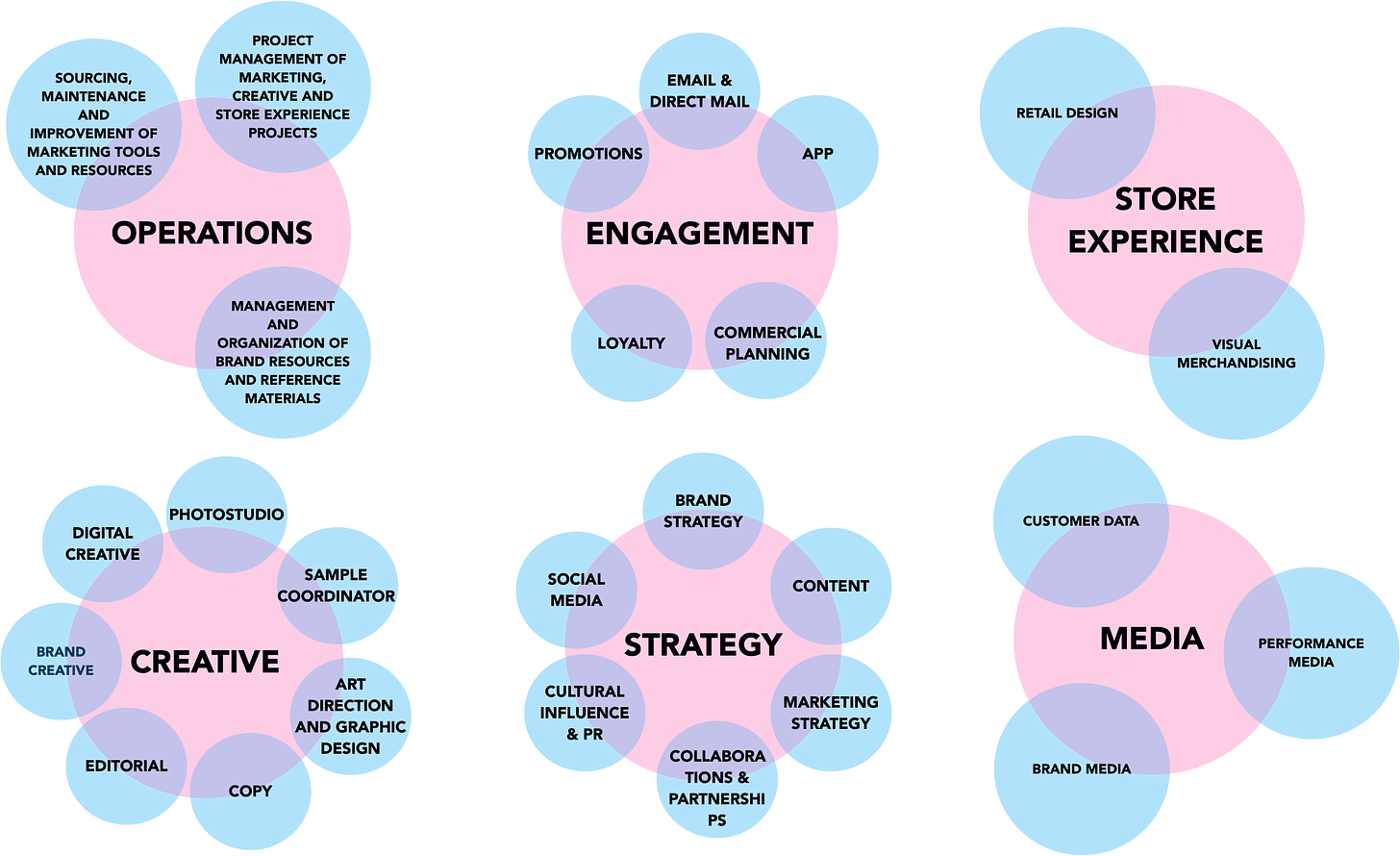Welcome to the Sociology of Business. In my last analysis, The age of functional maximalism, I explored how bold statements, practical styles, modularity and expression are fashion’s new aesthetic vocabulary (and why it matters). Buy my book The Business of Aspiration and find me on Instagram, Twitter, and Threads. With one of the paid subscription options, join The Sociology of Business WhatsApp Community.
There’s a gap in the short-term versus long-term thinking in brand-building. Short-term thinking is marked by expectation of the quick sales results; when they are missing, brand marketing gets cut, driving a company deeper into discount-dependency and increasingly expensive retargeting and other traffic-driving bottom of the funnel tactics. Long-term thinking prioritizes the full-funnel, maintains strategic vs tactical view, gives time for brand desirability to solidify, and deeply embeds the brand strategy and management across different departments and functions. The challenge is bridging the two.
This bridge is a matter of organizational design. Too often, organizational holistic thinking is missing, and brand is delegated to the domain of marketing (worse yet, just brand marketing), where it is equated with seasonal campaigns, PR, and media planning.
Brand strategy is more than marketing. It is deeply embedded in product design and merchandising, digital and physical retail, and media and cultural influence. This may sound like an overreach of Napoleonic proportions, but modern retail organizations have no choice in breaking the silos down and adopting a brand-centric model. There are a lot of brands around, a lot of retail channels and technologies, and a lot of ways to buy something; in this context, only by having a strong brand vision, positioning, and aesthetics a retail brand can successfully compete. Brands are forced to accelerate transformation towards their own future.
How successful this vision, positioning, and aesthetics is translated into a brand’s cultural influence and sales is a matter of organizational cooperation. Processes become more important than structure; the structure is flattened; success is a matter of nimble project management and production as much as of the compelling vision and growth strategy.
Brand management is today a strategy of cultural awareness and ampification, an experimental, portfolio approach to brand actions, creation of moments of interest, entertainment production, fandom-building and market expansion.
Brand management synchronizes all brand actions - from email copy to visual merchandising to design concepts and customer relationship management - across departments and functions. By doing this, it protects a brand’s pricing power; makes a distinction between margin-drivers and volume-drivers when it comes to products, and constantly renews consumers’ brand perception, making the brand relevant.
Brand x Product
Brand impacts product design through product pyramid, signature products, the brand look, and brand codes. Further, it defines the annual design concepts, in sync with the annual brand theme and its rollout. Brand further manages archives and archival revivals, vintage curation, capsules and special editions, collaborations, and builds narratives around hero products. Finally, brand provides styling guides and brand personas.
Choose one of the paid subscription options to access the rest of this analysis, including how brand is present across departmental workstreams.
Keep reading with a 7-day free trial
Subscribe to The Sociology of Business to keep reading this post and get 7 days of free access to the full post archives.






